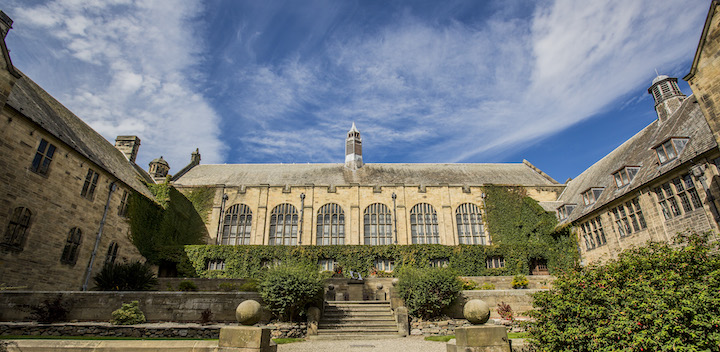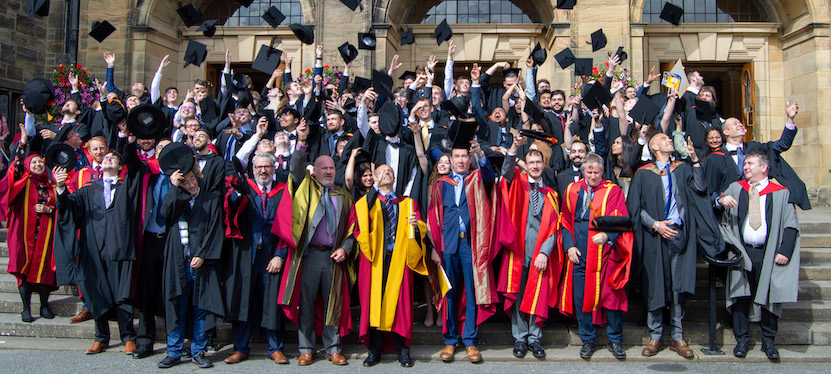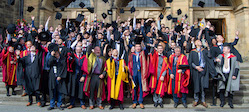This site is managed and maintained by academics in the School of Computer Science and Electronic Engineering (CSEE) at Bangor University.
Who are we?

We all share a love for teaching. We are a group of academics who are keen to help people learn. We enjoy leading and teaching others and are proud when someone learns new skills and then applies them in their work.
We all work at Bangor University, in the same School, and most of us are located in the same Building (Dean Street). The building houses some fantastic facilities: we have our own micro-fabrication clean room, test facilities, computing laboratories, lecture theatres, machine room, AI lab, to name a few.
What are our skills?
The School of Computer Science and Electronic Engineering is a mix of academics with a variety of skills. We are skilled in software development, programming, hardware, electronics, optics, fast communication networks, design, among other skills.
To know more about us, and to find more about the people behind each post, we suggest you look at their individual profile on the School website. Our staff pages hold lots of information about us.
Please go to the main School website for more information about the School, courses to study, the research that we perform, and other information.

Why rainbows and colour?
“We do a lot of research into visualisation and computer graphics, optical affects and research across different wavelengths. We have a lot of skills and knowledge. We want to share it.”
Professor Jonathan C. Roberts
Rainbows have appeared in many houses, in support for the National Health Service. Rainbows are hopeful. They are colourful. But, as academics, we got thinking, how are they formed? How can we code them? Can we create our own rainbow? As researchers, we are researching computer graphics, light, optics, and so on. So we thought “why not share our skills?” and get people to learn more about computer graphics, colours and optics.
There is a bunch of research going on to develop new ways to create visual things: researchers are developing games, creating new visualisation systems, looking at how to design new interfaces, and researching Virtual Reality (VR), Augmented Reality (AR) and Extended Reality (XR). Other researchers are looking to develop new optical devices. They are creating novel devices and sensors for computers to “see”, such as optical sensors, laboratory-on-chip technologies for diagnostics using micro-fluidics or micro-imaging. In other research, optical systems are used to make faster optical communication.
There are three research groups in the School:
Visualisation, Data, Modelling and Graphics Group
The School of Computer Science has run the Visualisation, Data Modelling and Graphics group (vmg.cs.bangor.ac.uk) for over 15 years. But the School has a longstanding visual-computing focus that goes back to the 1970’s, when Jan Abbas’ early computer graphics research. The group is actively promoting international research, for example, we hosted the European computer graphics conference (Eurographics 2011), Roberts was Chair of the Eurographics UK Chapter for 7 years (2002-09), Vidal is secretary of Eurographics UK Chapter. The group also leads Bangor in Supercomputing Wales, and the AI doctoral training centre (AIMLAC).
Photonics and communications Group
Photonics & Communications group, established in 2006, has firmly established its reputation world-wide as an international-leading research group in optical communications and digital signal processing (DSP) for telecommunications. It runs the DSP centre with specialised research into digital communication systems such as 5G networks and ecosystems.
Energy, Environment and Biosensing
Researchers are investigating Energy, Environment and Bio-sensing. Investigating sensing devices for Internet of Things wireless sensor networks, Solar devices (photovoltaic), wave power sources (with School of Ocean Sciences), and laboratory-on-chip technologies for diagnostics and biological cell treatment. The group has been successful with the award of a number of major grants, including Semiconductor-based Ultrawideband Micromanipulation of CAncer STEm Cells project (H2020 funded SUMCASTEC), SPARC II from Welsh Government and the EPSRC Centre for doctoral training for PhD training in Nuclear Energy

What courses do we run?
For our complete information on Undergraduate and Postgraduate courses, please go to our website:
- Our undergraduate courses
- Our postgraduate courses
- For PhD information please contact individual academics. Find their contact details on the staff pages.
The educational materials on this site were put together by a team at the School, led by Professor Jonathan C. Roberts.

